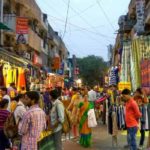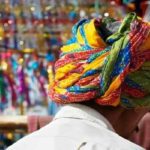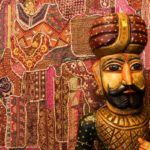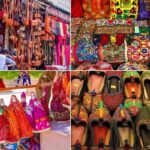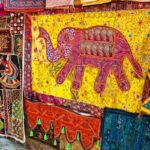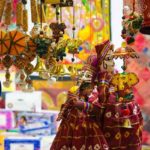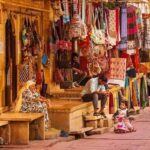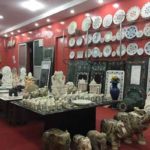Famous Textiles of Rajasthan’s Textiles are the product of centuries of fabric exploration, handicraft skills, and a keen eye for detail. These woven textiles, which have been honed with finesse and intent, are the culmination of an oral tradition that has been passed down over generations. It’s always a good idea to “buy local” – that is, to buy products made in your own community. Instead of shopping in Rajasthan’s urban shopping malls, go to small villages where you can find fabric, weaving, and embroidery that you won’t find anywhere else in the country.
Rajasthan perfected fabric dyeing even before America became obsessed with hippie tie-dye T-shirts, Famous Textiles of Rajasthan.
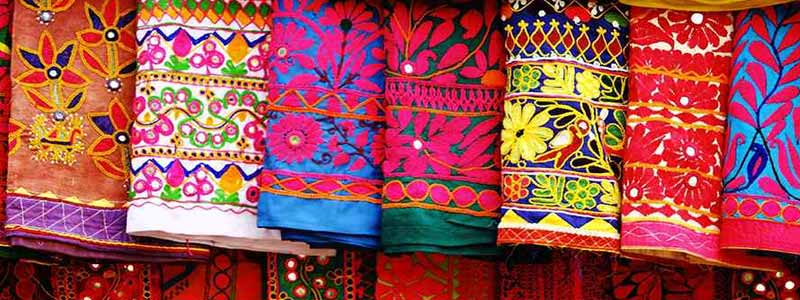
Textile history
After agriculture, the textile industry is India’s oldest and largest industry. According to studies, the people of Harappa civilisation knew how to weave and spin cotton, and references to this can be found in Vedic literature.
Rajasthan, in the western part of India, is known for its ancient textile art, which employs fabrics such as cotton, Silk and wool are mixed to produce magnificent patterns and textures with vibrant colours.
Handmade textiles decorated with wonderful designs and vibrant colours crafted by our skilled craftsmen can be found at Rajasthan Textile. Rajasthan Textile is located in Jaipur, the heartland of Rajasthani textile, and offers a wide range of rajasthani textile. We specialise in producing high-quality fabrics, the most valuable of which is the “Tie & Die” job, also known as bandhni in the area. In the form of vibrant bandej laheria sarees and safa, tie and dye work is common all over the world.
Rajasthan Textile is the “Heartland of Hand Block Printing” and represents the true essence of block printing, with the majority of the work being done by hand. The process is associated with home furnishings as well as cloth for personal wear. Sanganer and Bagru are the major block printing centres in Jaipur (Famous Textiles of Rajasthan).
Rajasthani fabric is available in a wide variety of ornamented embroidery work for use in home decor and ethnic wear. Rajasthani embroidery work designs include khambadia, zardozi, and mirror work, which can be seen on wall hangings, bed covers, and ethnic wears. This adds to the allure and modernity of the Jaipur textile around the world.
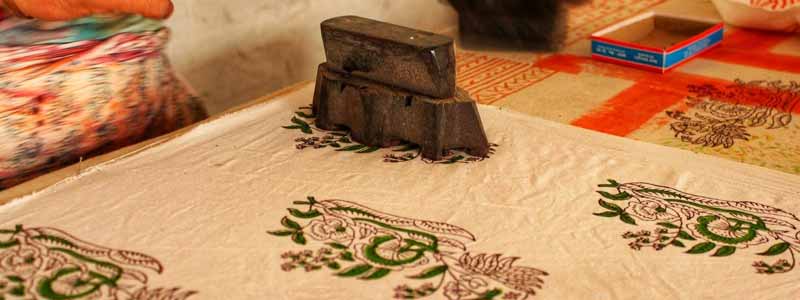
Block Printing
Block printing is an ancient Rajasthani art that has been practised since the dawn of time. In Block Printing, natural colours are used. Rajasthan is famous for the art of block printing, which is still widely practised there today. Block printing has been common since the 12th century, when it was granted royal patronage by the kings of the time. Block Printing is done on cotton fabrics. Famous Textiles of Rajasthan is an important center in India where block printing has gained a good prominence and the designs of the block printing that originated in Rajasthan are considered the most popular and best of all other designs, Famous Textiles of Rajasthan.
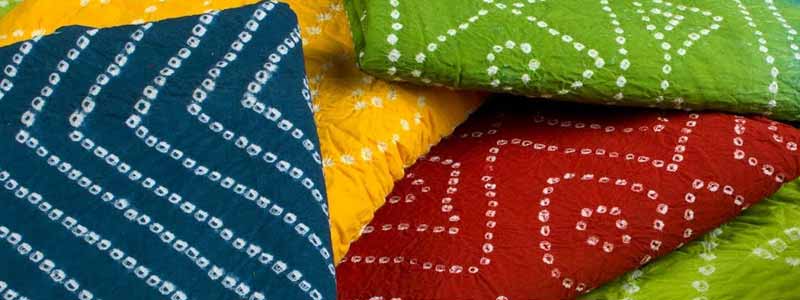
Bandhani
Bandhani is a tie-dye fabric embellished by plucking the cloth with fingernails (derived from the Sanskrit word bandh, which means to bind and tie). Yellow, red, blue, green, and black are the primary colours used in Bandhani. Only natural colours are used in the tie-dye process, which allows for a wide range of patterns. Bandhani is also worn for symbolic purposes, red represents a Hindu bride & yellow represents maternity.
Bandhani is a process that requires a lot of expertise. The technique entails dyeing a fabric that is closely bound with a thread at many stages, resulting in a variety of patterns such as Chandrakala, BavanBaug, Shikari, and so on, depending on how the fabric is tied. Yellow, red, blue, green, and black are the primary colours used in Bandhani.
The main colours used in Bandhani are natural. As Bandhani is a tie and dye process, dying is done by hand and hence best colours and combinations are possible in Bandhanis.
The Bandhani work has been exclusively carried out by the Khatri community of Kutchh and Saurashtra. A meter length of cloth can have thousands of tiny knots known as ‘Bheendi‘ in the local language (‘Gujarati’). These knots form a design once opened after dyeing in bright colours. Traditionally, the final products can be classified into ‘khombhi’, ‘Ghar Chola’, ‘Chandrakhani’, ‘Shikari’, ‘Chowkidaar’, ‘Ambadaal’ and other categories, Famous Textiles of Rajasthan.
Leheriya
Practiced exclusively in Rajasthan, Leheriya is a tie-dye technique which results in a glistening cloth with distinguishing patterns. Done on thin cotton or silk cloth, the lengths of Leheriya are usually appropriate for sarees & turbans. Usage of Indigo is prominent for coloring Leheriya, giving a dazzling look to the fabric.
Fun Fact: Turbans of Leheriya cloth were a popular male fashion choice in the 19th & 20th century, Famous Textiles of Rajasthan.
Bagru
Named after the town they are popularly produced in, Bagru cloth is created by natural dyeing & using an interesting hand block printing method practiced exclusively by the Chippa community. Known for its zigzag patterns, bagru printing is done using vegetable & Indigo colours.
Fun Fact: Bagru Printing made its way into Rajasthan during the 17th century. The Chippa community immigrated to the desert state to get away from the social upheaval going on in Gujarat at the time, Famous Textiles of Rajasthan.
Kota Doria
The most famous cloth manufactured in the Kota region is the Kota Doria. Popular features of this textile are the checkered square designs & lightweight feel. Onion juice in addition to rice mush are applied during the weaving process of this garment, ensuring the durability of the material.
Fun Fact: Back in the 17th century, Kota Doria sarees were known as Masuria Sarees as they were only woven in Mysore. A Mughal General by the name of Rao Kishore Singh brought these weavers into Kota and thus began the tradition of Kota Doria Sarees.

